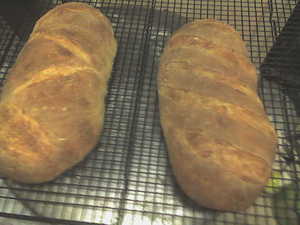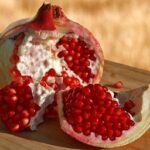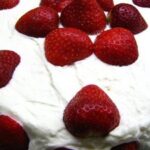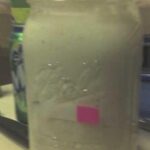The Dough
Bread dough is basically flour and water, just like starter, and salt. As with many types of starter, there are many types of bread recipes. You can add olive oil, sugar, honey, salt, caraway seeds (as in rye bread), milk, molasses, or fruit, or any combination thereof, though this list is not conclusive. All of these things (except the seeds, salt, and sugar) are liquids and will add to the hydration of your dough. Hydration is the percentage of liquids to flour (and other dry ingredients). The other dry ingredients lower the hydration of your dough.
When making your dough, the hydration is up to you. The wetter the dough, the less you knead, the better the crumb (look and texture of the bread). Once you’ve mixed your dough, let it set a bit, at least 20-30 minutes, before you knead it. This just gives it a firmer texture for you to work with.
There are many ways to knead. The traditional way is to push the dough with the heal of your hand, pull it back, turn a quarter turn, then repeat. Do this for about 20 minutes. You know when to stop when the dough is tight. That is the key. Another method is to stretch and fold. This requires a more hydrated dough. Flatten the dough out into a sort of square or rectangle. Pull one end out and fold back over about a third of the way. Do this with each side. Let it rest for about 20 minutes, then repeat. Do this about six times. Again, when you form it into a ball and it is tight, you’re done. On one of my favorite bread websites (www.thefreshloaf.com), a gentlemen that goes by floydm (who also owns the website) discovered a technique he calls the French fold. You can see a video he made on his website. His technique requires very hydrated dough (but not too hydrated), something I have never been able to achieve. It is beyond me to describe it. Suffice it to say it is a quick method and takes a lot of practice. There are other techniques, some of which just make me laugh out loud. Also, when your dough is very wet, you won’t be able to get that tight texture, but you will still get a good crumb. The important thing about kneading is that too much kneading will ruin your bread. Trust me on this. If you insist, try it. Knead it to death, and you will cut into (or try to) a rock.
Once you knead it, you need to let it rise. Put it in an oiled bowl big enough to hold the dough when it doubles in volume. I use olive oil. Make sure the entire ball is oiled. Cover with a dishtowel or plastic wrap. Let it rise until it has doubled in volume. This can be 20 minutes to 2 hours or more.
The more yeast (commercial or starter) you use, the faster it rises. When baking bread, this is not necessarily a good thing. The longer it rises, the more flavor your bread has. If you’re looking for a richer flavor in your bread, go for the slow, long rise. Put it in a cool place and let it go.
Many recipes say to punch it down. If you’re looking for the standard sandwich loaf, go for it. Otherwise, fold it out of the bowl. The less you handle it, the better the crumb. Cut and shape it as necessary, depending on how many loaves you are making. Cover and let it rise a second time until it has doubled in size. Slash the top. You can use a razor blade or knife. You can even buy a cutting device just for this purpose, but a single-edge blade or a sharp knife work just fine.
Shaping, you ask? There are dozens of ways to shape your bread. Contrary to popular belief, and as with all of bread baking, how you shape your dough is up to you. There is the standard loaf put into a loaf pan. You still have to do something with it to get it in there. There is the boule (ball), the bâtard (torpedo), the baquette, the couronne (crown), and another dozen ways to shape your bread. You see certain breads in certain shapes in the store. Those shapes were the baker’s choice. You choose how you want yours to look.
Baking Your Bread
Put it in a preheated oven. The temperature depends on what you are after. The higher the temperature, the less the cooking time, the crustier the bread. Add steam (a pan of water), spray the oven and/or bread with water, you get an even crustier bread. If you want a softer crust, bake at a lower temperature for a longer period of time. Your bread is done when it sounds hollow when you tap on it. The internal temperature should read 200-205 degrees Fahrenheit.
I know it will be tempting to cut into it as soon as it is out of the oven. Don’t do it. Let it sit until it is completely cool. I know, I know. There is nothing better than melted butter on fresh-out-of-the-oven bread. Just like with meat, the bread is still baking when it comes out of the oven. Let the yeast and glutens and all the other stuff that’s going on happen.
A few comments on altitude and other stuff
Altitude can be the bane of a baker, especially a bread baker. At altitudes above 3,000 the quantities in most recipes do not apply. I have to play with the amount of ingredients and the baking time. More water is required than if baking at sea level. Flour works like a sponge. It sucks in liquid, so you need to add more water. Remember that oil, milk, and such count toward the liquid as well as extra dry ingredients will require you to add more liquid.
Rising time lessens. There is less pressure at high altitudes which allows yeast to rise faster. So, if you are going for robust flavor, use even less yeast/starter than you would at sea level.
Notice I did not give measurements for how much water to add for altitude. It all depends on the altitude and dryness of the air. Fifty percent humidity at 6,500 feet is like 100 percent at sea level. I am at just over 6,000 feet. My sister over a thousand feet higher and only 30 minutes away. How I bake will differ a great deal from how she bakes, meaning she will use more water, her dough will rise faster than mine.
At sea level, recipes require two rises, the first rise, then the rise after shaping. Colorado State University Cooperative Extension published High Altitude Baking. They say that bread baked at high altitude should have three rises. (CSUCE, Kendall, ed) As with baking anything at high altitude, it is trial and error. For me, I found that three rises is too much. My bread turns out better with two, though if I baked bread at my sister’s house, I might need three.
I have given you the very basics of baking great bread. There are dozens of websites, and books for that matter, that you can turn to for advice. As mentioned in The Dough section, www.thefreshloaf.com is a favorite of mine. Another is www.sourdoughhome.com. At www.thefreshloaf.com you can register and ask all the questions you like. You will receive a plethora of information, including recommendations for books and other websites. One popular book is The Bread Baker’s Apprentice by Peter Reinhart. It is for the true beginner and has illustrations to help guide you along.
As a relative beginner, I have found that pictures help. If you find a website or book with pictures, use it. If a website allows you to register so you can participate in forums and such, register. You will be surprised how many people in the world want to bake bread. Yes, in the world. Many of them, if not most of them, are men. I was surprised by that.
For a single person like me, especially at high altitude, I never bake as much bread as I would like, and more than a loaf or two a week is too much. That means as I experiment (baking at high altitude is an experiment in action) I share those experiments with friends and family.
Try baking some bread. There are dozens of types of breads that don’t require starter. Even if you live a mile above sea level or more, give it a try. When you get a good result, the taste cannot compare.
Sources:
Kendall, Patricia., ed. High Altitude Baking. Denver: 3D Press, Inc., 2003.
Reinhart, Peter. The Bread Baker’s Apprentice. Berkley: Ten Speed Press, 2001.






